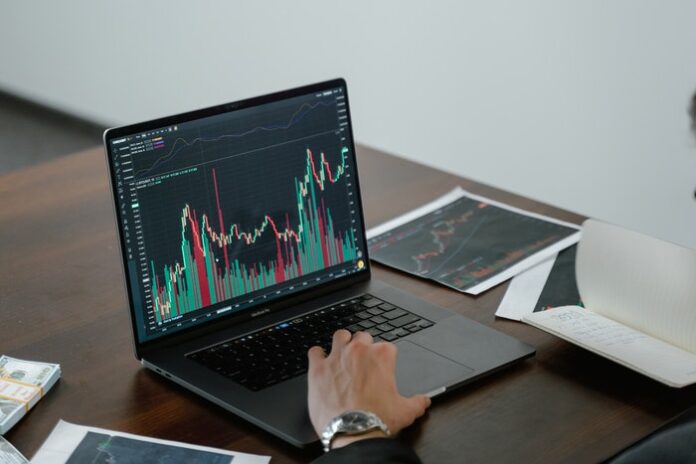Exchange-Traded Funds are in the broader classification of mutual funds and can be traded on an exchange like stocks. You must understand how mutual funds and index funds work to understand better how ETFs work.
Mutual funds entail investing in an array of investments ranging from stocks, bonds, and other securities. The fund is operated by a financial professional whose main aim is to ensure that you get the best returns from your initial investment. Mutual funds also carry a small operational fee that goes towards the financial expert.
On the other hand, index funds are also designed in the same way as mutual funds, only that they offer higher returns because they are not traded frequently; rather, they are bought and held. Index funds carry a lower expense ratio compared to mutual funds.
ETFs, just like index funds, allow you to be diverse in investments (an index) but can be traded just like normal stocks. Also, compared to the cost of the other investments, the cost of ETFs is significantly low.
Pros of ETFs
Diversification
Just like in gambling, diversifying comes in handy as well when you want to invest. You will always see people searching for the best bitcoin sportsbooks when it comes to sports. On the other hand, woke investors will be on the lookout for the best bonds, shares, ETFs, and other financial instruments.
In a nutshell, diversification in a portfolio means reducing risks that involve the spreading of different forms of investment to ensure that you limit your exposure to only one asset. Unlike stocks investments where you are only exposed to stocks. ETFs allow for broad exposure to an array of different assets, which reduces volatility.
Transparency
As an investor, you must see your underlying portfolio anytime you want to. Numerous investors mostly prefer ETFs as it is easy to see your portfolio daily. Other forms of portfolios, for instance, mutual funds, report their holdings a few times annually, raising concerns about transparency.
Trade Like Stocks
ETFs are gaining popularity in the investment world mainly because they are easy to trade, just like stocks. You are eligible to buy or sell ETFs anytime during the day, provided the stock exchange is open just like individual stock shares. On the other hand, mutual funds can only be sold or purchased after the closing of the trade business for the day. Day trading of a portfolio may come with cons, but it is also an advantage as it makes it easy to get out of a portfolio if the need arises.
ETFs’ ability to be traded like stocks also implies that it is possible to place market orders like limit orders and stop orders that initiate a trade if the prices go up or down to a certain level. ETFs also come with the advantage that you could sell or buy options against them though the move is considered a poor financial decision.
Low Minimum to Invest
Unlike other investment portfolios, ETFs come with a significantly low minimum requirement. As a new investor in ETFs, you are only required to invest one share. There are also a few brokerage houses where you can invest in a fraction of a share as a starter. For some portfolios, for instance, mutual funds, the minimum investment requirement may go to upwards of 4–5 figures, which may be quite high, especially for starter investors.
Tax Efficiency
As earlier said, ETFs, just like stocks, are traded on an exchange. For this reason, buying and selling of ETFs is between the actual buyer who wants to buy the shares and the owner of the ETFs, who is the seller. It implies no recorded sale of any security in the package; hence, it does not carry any tax obligation.
Cons of ETFs
Commissions and Trading Fees
Numerous financial experts have termed ETFs buying and selling as short-term speculations. Due to this feature of ETFs, they carry frequent trading costs and commissions, which in the long run lower the investor’s returns.
Liquidity
ETFs are highly liquid portfolios which means that you can easily buy or sell them when the need arises. Some ETF assets, however, are not as liquid, making liquidity a con. Real estate, bonds, and commodities may not be as liquid as they may be difficult to sell immediately when you want to.
It Is Easy to Get Caught with Capital Gains
Different ETFs have different characteristics. Some ETFs will distribute capital gains to their respective shareholders, but some do not. You should take note of ETFs that distribute capital gains to shareholders as they come with capital gains tax obligation, which increases your tax liability. While shopping for ETFs, it is important to select an ETF that reinvests all the capital gains.
From what we have discussed, it is evident that ETFs have numerous pros as compared to cons. It is, however, important to have a background understanding of ETFs before investing in them.
Find a Home-Based Business to Start-Up >>> Hundreds of Business Listings.

















































servlogin. com/metatrader-4 Platform Offers The Highest Trading Accuracy Provided By The Best Technological Solutions That Are Also Used For Algorithmic Trading By Banks And Hedge Funds. Yet, This Platform Is Extremely Popular Among Forex Traders Worldwide Since It Allows Them To Control Their Capital With Less Risk And At Low Costs.